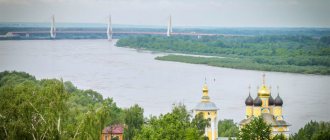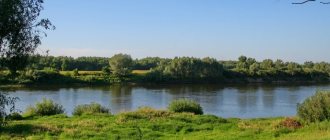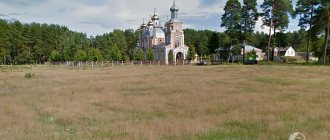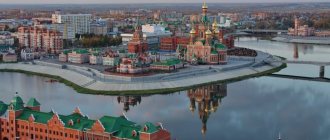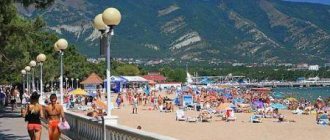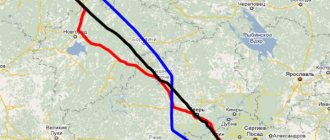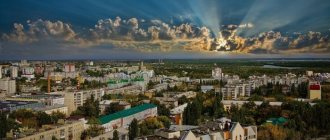Every person who has studied geography knows that the border between Europe and Asia passes through the Southern Urals, the details are not known to everyone, namely that it passes through the city of Orenburg, the capital of the Orenburg region.
In order to find out where the city of Orenburg is located, just open a world map and find the Republic of Kazakhstan. On the border of Russia and Kazakhstan is the Orenburg region, the Ural River. On it stands Orenburg, built on the spot where the Sakmara River merges with the Urals.
Number
Orenburg has the status of the largest city, since the population exceeds half a million citizens. The exact number of people for 2021 is 577,388 people. Since 2012, there has been a constant increase in population.
Interest in the settlement is ensured by developed industry, as well as a large number of cultural buildings, including theaters, museums, concert halls, libraries, galleries and exhibition centers. In the center there are buildings predominantly of old architectural styles.
Compound
Orenburg is a multinational settlement where representatives of more than a hundred different nationalities live. Most of the residents are Russians, with slightly fewer Tatars. Also present are Kazakhs, Ukrainians, Bashkirs and many others. Thanks to the different national composition, a rather interesting culture is formed, which contains the characteristics of a wide variety of nationalities.
Despite the presence of a large number of ethnic groups, conflicts do not arise between representatives of different nationalities in Orenburg. On the contrary, residents often celebrate Easter together, despite their attitudes to different religions. At the same time, Russians really like to put chak-chak on the festive table - a signature dish of the Tatars.
It is also noted that residents of Orenburg know at least two different unrelated languages. The first of them is Russian, since it is state-owned and education in universities and schools is conducted in it. The second language is usually spoken at home, with family or at major citywide holidays and events.
You can also notice that representatives of different ethnic groups work in different enterprises. Russians most often work as employees of industrial enterprises, but are least likely to work in agriculture. Kazakhs and Mordovians are the opposite.
A little history
The city was founded and named in 1743 by decree of the Russian Empress Anna Ioannovna. It was built as a Russian outpost on the border with Asia. The place for its foundation was chosen only the third time. Initially, it was founded at the junction of the Ori and Yaik rivers (now the city of Orsk), so the name was given to it accordingly - Orenburg, which means “city on the Ori” in German. The question of where Orenburg is located would have confused many at that time.
Due to the fact that the settlement was flooded when the rivers flooded, it was decided to move the city to another place, and only the third time, a commission led by I. I. Neplyuev, later the first Orenburg governor, chose a place to found a city with the same name. It became the Berdsk Fortress, which was mentioned by A.S. Pushkin in his story “The Captain's Daughter”. It was located near the confluence of the full-flowing Sakmara River into the Yaik River (Ural).
Cities
The largest city in the Orenburg region (and its administrative center) is Orenburg, founded in the mid-18th century - 1743. For 19 years (from 1938 to 1957) it was called Chkalov, after which the previous name was returned.
The second most important and largest settlement is Orsk. The number of its inhabitants is not very high, but it occupies a fairly large area, ahead of Novosibirsk and Kazan. The third place is occupied by Buzuluk, located at the intersection of the Buzuluk and Samara rivers. Next to it there is a popular national park called “Buzuluksky Bor”.
The fourth largest settlement located near Orsk is Novotroitsk, where metallurgical industry enterprises are located. Buguruslan is the fifth settlement, located in the western part of the region, and is a major center of the oil industry.
Sol-Iletsk, as the name suggests, is a settlement that is the main producer of salt in the Russian Federation. On its territory there are many resorts and sanatoriums, which are chosen by many Russians for health improvement and prevention. The second famous attraction, although not the most positive, is the Black Dolphin prison, where life prisoners are sent.
Abdulino is a large settlement with a large number of food industry enterprises, railway transport and construction materials. The last city in the Orenburg region is Yasny, where the base of the strategic missile forces is located. There has also been a cosmodrome here for fifteen years, used to launch satellites into Earth orbit.
Monuments erected in the city
1. The monument, where Pushkin and Dal stand side by side, was erected for the 255th anniversary of the city; two representatives of Russian literature stand on the pedestal. Both of them provided an incentive to improve the Russian language.
monument to Pushkin and Dahl
Alexander Sergeevich, after visiting Orenburg, created the story “The Captain’s Daughter,” a work that is known to every Russian. V.I. Dal, known as the compiler of an explanatory dictionary, worked for several years as a military doctor in Orenburg.
2. The monument to Yuri Gagarin, the first man to fly into space, was opened on April 12, 1986. Yuri Gagarin graduated from the local flight school and received a diploma with honors.
The monument depicts the figure of an astronaut dressed in a spacesuit, his arms raised up. Behind there are two steles that identify a rocket making a space flight.
3. Monument to the Cossacks of Orenburg, installed in the park in the 7th year of the 21st century. The monument is dedicated to the Cossacks who defended the eastern borders of the Tsarist Empire of Russia from external enemies. The sculpture represents a Cossack warrior sitting on a horse.
Monument to Chkalov
4. The monument to Chkalov, the famous pilot, has been located on the embankment of the Ural River since 1954. The bronze figure was cast in the capital of the USSR and then installed. The most grandiose monument in Orenburg, the height of the pedestal is 7 meters, and the standing figure of the pilot rises 6 meters.
5. Elizabeth Gate, given to the city by Elizabeth the Russian Empress. The stone gate was supposed to symbolize the transition from the European part to the Asian part of the world.
The design of the gate consists of two powerful pillars with niches containing sculptures of angels; a lintel with a bas-relief is installed between the gate supports. Since 2008, after restoration, the Elizabeth Gate received its original appearance.
Dynamics by year
You can track the dynamics of population changes using the federal state statistics service or on the website of the interdepartmental information and statistical system.
In 2003, the city had a population of 542,700. Until 2021, the dynamics were either positive or negative, but since 2012 there has been an annual increase in residents. At the moment, 572,188 people have registration.
Religious composition
Due to the rather heterogeneous ethnic composition, representatives of a wide variety of religions live in the settlement. Most communities are located in large cities of the Orenburg region - in Orenburg itself and Orsk, but there are also communities in villages.
At the moment, more than 300 associations have official permission to conduct their activities. The religious composition does not coincide one hundred percent with the ethnic composition, but most of all in the Orenburg region, representatives of the Slavic and Finno-Ugric peoples accepted Orthodoxy. The Turkic population professes Islam.
Geographical location of Orenburg, climate
The Orenburg region is a border region; the border with Kazakhstan stretches for 1876 kilometers. To answer the question of where the Orenburg region is located, you need to know its borders. The region borders the Samara and Chelyabinsk regions, the republics of Tatarstan and Bashkortostan.
Orenburg, the capital of the region, is a beautiful city. The geographic coordinates are: 51.7727 degrees north latitude, 55.0988 east longitude. Knowing these coordinates it is easy to get an answer to the question of where Orenburg is located on the map.
The Europe-Asia pedestrian bridge crosses the Ural River. Orenburg is the link that connects these two parts of the world; it has a developed railway network, an airport with international and local lines.
The climate in the capital is moderately continental, sometimes changing to sharply continental, so the city experiences sudden temperature changes. In summer, which begins in June and ends at the end of August, the heat in some places reaches up to +42 degrees.
Winter begins in November, when the first snow falls, and ends in April; temperatures can drop to -49 degrees in some months. Steppes where sheep graze and forest-steppes are located around the city, which is why Orenburg became famous for its down scarves.
Fertility and mortality
According to official data, 3,671 people have died in the city over the past six months. This figure is less than last year's figures, but the birth rate is also declining. The growth in the total number of residents is due to migration from neighboring regions.
People go here to enroll in higher education or to find a better job. Also, do not forget about the different ethnic composition of the population - some families have relatives from other countries who come and stay here, choosing this city as their permanent place of residence
Gender and age
In Orenburg, there is currently an uneven gender composition. There are about 252 thousand male citizens, about 302 thousand female citizens. This is a completely normal indicator for the Russian Federation, in most cities, which usually have more women than men living in them.
The age composition of Orenburg is as follows. 15% of all residents are children, 17% are elderly people. The remaining 68% is the working population. Based on these statistics, it can be noted that most of the residents are young people who are either already working or will soon join the ranks of highly qualified specialists. Also, according to available statistics, it turns out that families with one child predominate, but an increasing number of parents are deciding on a second or third child.
Region data
Main attractions
Orenburg is a city where, having visited once, you want to come again. If a down scarf is a business card, then the bridge for pedestrians across the Urals is the most famous attraction.
The bridge was built in 1935, the wooden structure of which needed to be restored or repaired annually after the river flooded in the spring.
The metal bridge was built only 153 years later in the 20th century in 1982. You can cross the bridge from one bank located in Europe to the other bank, ending up in Asia.
